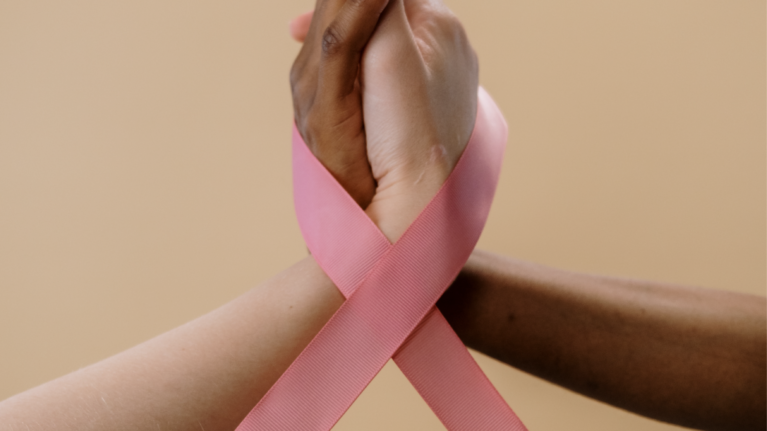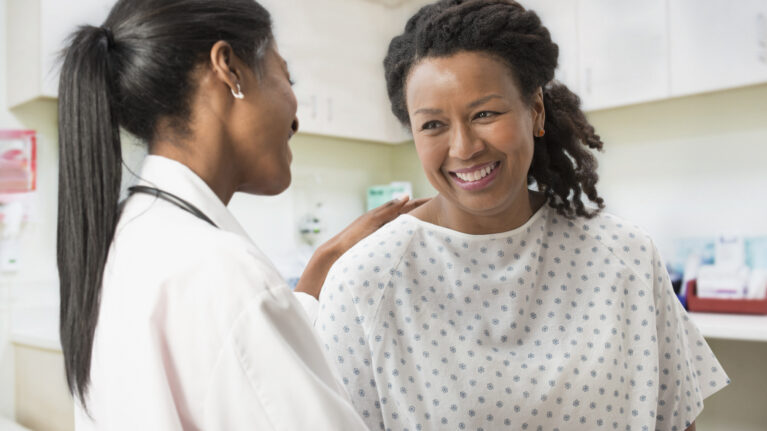Breast Screening Inequality is Real, People

Not all access to health care is equal. It’s actually far from it. Black, Brown, and LGBTQ people face many barriers when it comes to this (should be) basic human right, and today we’re exploring the Grand Canyon-sized gap in breast cancer screening.
We need to break down these barriers to breast cancer screening for these communities. Societal inequalities disproportionately impact their health—and that’s not okay. If you have breast tissue, you deserve to keep it as healthy as possible.
Lack of Good Data and Research Negatively Impacts Black, Brown, and LGBTQ Communities
Until recently, the diversity between the different subgroups of Hispanics and Latinas was not even addressed in breast cancer research. This means that the data collected considered these varied racial backgrounds as one category.1 When you look at these communities as one, it causes blanket-statement research and makes it difficult to hone in on how breast cancer is truly impacting the many types of Hispanic and Latina women. Learn more about how health disparities in breast cancer affect the Hispanic and Latin American communities here.
In the LGBTQ community, there’s actually no published data (that’s right, none) on breast cancer incidence in lesbian and bisexual women. There are also no published studies on incidence or mortality rates for breast cancer among gay or bisexual men. The few published prevalence estimates that do exist? Deemed unreliable because the studies were too small and of poor quality in terms of study design and reporting.2
Social Inequalities Get in the Way of Preventive Care
Why do social conditions play such a big role in overall health? Because they impact nearly every aspect of care, including access to insurance, preventive care, and treatment.1
Hispanic women and Latinas are disproportionately affected by these factors, which is why we see lower rates of screening mammography in this group.1 Early detection saves lives, and these women don’t have the same access as white people to lifesaving measures like early detection and treatment.
Black women’s health is also put at risk by societal inequalities. That’s a fact. According to the National Cancer Institute Surveillance, Epidemiology, and End Results Program, Black women with breast cancer are approximately 40% more likely to die from the disease than white women with breast cancer.4 Why is that? Well, inferior screening for one. According to a recent JACR study, only 44% of breast cancer detection exams performed on Black women are done using 3D mammography.2*
In the LGBTQ community, there are several barriers that can keep transgender people from getting screened including discrimination, lack of insurance, physical discomfort, and uneasiness with the exam.6 Here’s a great resource to learn more about transgender people’s experiences with cancer.
It’s Crucial to Improve the Relationship Between Health Care Providers and the LGBTQ Community
Trusting and feeling safe around health care providers, aka HCPs, makes all the difference. Studies have shown that gay and bisexual women don’t have positive relationships with their HCPs. Because of the differences in behavior and barriers to health care, lesbian and bisexual women may be an underserved population regarding breast cancer screening and prevention.3
We can all relate to avoiding situations that make us uncomfortable. But protecting your breast health should never be an uncomfortable situation. Health care providers need to be aware of the cultural factors affecting treatment decisions and address these culture-specific concerns when counseling patients about treatment options.3
What Else Does the LGBTQ Community Need to Know?
1. OUT: The National Cancer Survey is a survey for LGBTQ cancer survivors. You can help to improve cancer care by sharing your experiences with this disease. It was created by the National LGBT Cancer Network to advocate for the needs of survivors and to educate researchers, lawmakers, and health care providers on how to create welcoming and safe environments.5
2. If you have breast/chest tissue:
a. Trans men and non-binary people: Self-exams should begin at age 20 and be done monthly. Exams by a medical provider should be done every year. If you’ve had reduction (not reconstruction) top surgery or haven’t had top surgery, a mammogram is recommended every year. If you’ve had reconstruction top surgery, annual exams with a professional should begin at age 40 and be done every year.6 And whether you have or haven’t undergone hormone therapy, or you’re currently going through it, if you have breast tissue, you qualify for early detection measures.7
b. Trans women: Beginning at age 50 and after 5 or more years on hormones, self-exams should be done every month, with a medical provider exam and a mammogram recommended every year.6
Getting a Mammogram Is The Genius Choice
If you’re a member of any (or all) of these communities, getting a mammogram is one of the most important things for you to take advantage of. The second most important thing? Spreading the word to your fellow community members, and encouraging them to go get one, too—alone or with you! Find a Genius® 3D Mammography™ exam near you today.
Hologic is also supporting solutions that address the systemic racism and unconscious bias preventing Black and Brown women in the U.S. from receiving the high-quality and equitable health care we all deserve. Learn more about what we’re doing with Project Health Equity here.
*Journal of the American College of Radiology
Disclaimers – The content in this piece is for information purposes only and is not intended to be medical advice. Please contact your medical professional for specific advice regarding your health and treatment. This information may be relevant in the U.S. and other markets and is not intended as a product solicitation or promotion where such activities are prohibited. Because Hologic materials are distributed through websites, eBroadcasts and tradeshows, it is not always possible to control where such materials appear. For specific information on what products may be available in a particular country, please write to womenshealth@hologic.com.
The Genius® 3D Mammography™ exam (a.k.a. Genius® exam) is acquired on the Hologic® 3D Mammography™ system and consists of a 2D and 3D™ image set, where the 2D image can be either an acquired 2D image or a 2D image generated from the 3D™ image set. The Genius® exam is only available on the Hologic® 3D Mammography™ system. Please consult your physician for a complete list of benefits and risks associated with mammography.
SOM-01185 rev. 001 3/22 Hologic, 3D, 3D Mammography, Genius, The Science of Sure, and associated logos are trademarks and/or registered trademarks of Hologic, Inc. and/or its subsidiaries in the United States and/or other countries.
-
1. What Hispanic Women and Latinas Need to Know About Breast Cancer. Breast Cancer Research Foundation. https://www.bcrf.org/blog/hispanic-latina-breast-cancer-facts-statistics/. Accessed January 26, 2022.
2. Breaking Down Barriers in Breast Cancer Screening. Hologic. https://www.bwhigenius3d.com. Accessed January 12, 2022.
3. Cancer and Lesbian, Gay, Bisexual, Transgender/Transsexual, and Queer/Questioning Populations (LGBTQ). National Center for Biotechnology Information, U.S. National Library of Medicine. https://www.ncbi.nlm.nih.gov/pmc/articles/PMC4609168/. Accessed January 25, 2022.
4. Brielle Benyon. Some Treatment Outcomes Do Not Differ Between Black and White Patients With Breast Cancer, But Disparities Persist. https://www.curetoday.com/view/some-treatment-outcomes-do-not-differ-between-black-and-white-patients-with-breast-cancer-but-disparities-persist. Accessed January 25, 2022.
5. Out: The National Cancer Survey. National LGBT Cancer Network. https://cancer-network.org/out-the-national-cancer-survey/. Accessed January 26, 2022.
6. TRANSforming Cancer. National LGBT Cancer Network. https://cancer-network.org/transgender-and-gender-non-conforming-care/. Accessed January 26, 2022.
7. Trans People and Cancer. National LGBT Cancer Network. https://cancer-network.org/wp-content/uploads/2017/02/Trans_people_and_cancer.pdf. Accessed March 10, 2022.


